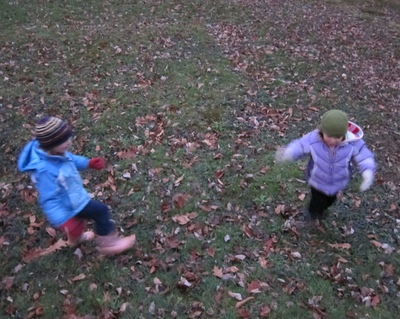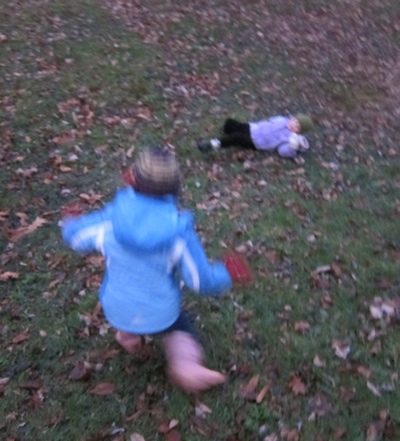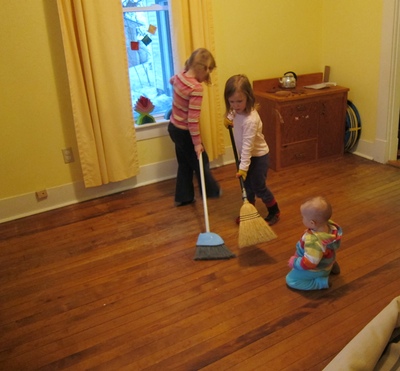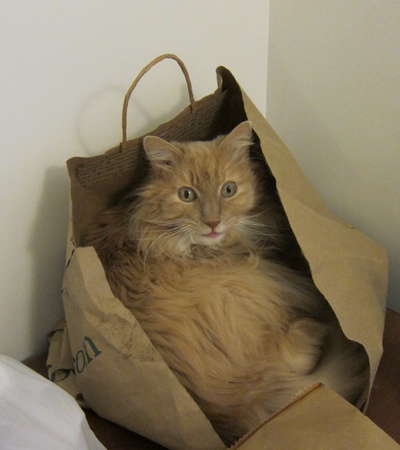Several months ago I wrote my opinions on Gun Play. It’s been on my mind since the Newtown shooting and I’ve
been struggling with whether I really do accept that gun play is an important
part of a child’s play.
Last week we got together with some dear family friends
and one of the children brought a pretend gun into their play. I immediately
tensed up and had to resist the urge to shut down their imaginative scenario. I had to remind myself that our kids have no idea what happened
in Newtown; my reaction is based on the horror of reality, while their play comes from a place of innocence. I do not want my strongly
negative, emotional reaction to interfere with their natural, innocent play, but… I can’t let go of what guns mean to me.
Because I think this topic is on many parents’ minds, I thought
I’d repost some thoughts from my original post.
Generally speaking, children play
what they need to play in order to process their world. Most children are
exposed to guns through a variety of sources, such as t.v., movies, the news,
other children, and toys. Some children have parents who have to keep guns in
their home because of their job, and children of military families are exposed
to guns, especially if they live on a base. Whether we like it or not, guns are
very present in our lives. It makes sense that children need to process this
aspect of life and doing so through play is healthy.
I think it is important to also keep
in mind that gun play doesn’t have the same meaning to children as it does to
adults. I am horrified at the idea of my five-year-old going around pretending
to shoot people. But that is based on thirty some years of experience and a
mature understanding of murder and death. To a five-year-old, it is nothing
more than an escalated version of tag.
As far as allowing it in my home, I
follow the guidelines Katherine’s teacher uses in his classroom. I try to be
aware of the effect gun play is having on the children playing it and
the children nearby who are not playing it. If someone feels threatened, I
intervene, but if no one feels threatened, I’ll let it go. When I do intervene,
I’ll tell the gun player that the gun may not be pointed at people and I’ll try
to redirect the play. Often I’ll suggest they hunt a dragon or some wild beast
in the forest. Sometimes I’ll turn their pretend gun into a pretend water
squirter and request that they cool me down. This usually works, but I have it
easy because the girls usually lose interest pretty quickly anyway.
For parents whose children don’t lose
interest so easily, I think it is possible to embrace the need for gun play.
One parent I know enrolled the whole family in archery lessons. Every weekend
they went into the woods together to practice their skills. They enjoyed
shooting targets out in nature in a safe and healthy way. I think this approach
is brilliant - it treated her son’s need and desire for gun play positively and
with respect, and it brought the whole family into it in a way they could all
enjoy.
As with any issue, parents need to
find their own comfort level while considering their individual children. One
child may really need gun play, while another child may be stuck in a gun play
rut to the point of missing out on other important kinds of play. One child may
play guns in a way that negatively affects others while another child may play
in a way that is non-threatening. How a parent decides to deal with gun play is
personal, and may change with time as the child changes.
I have to say, though, despite my
views that gun play is generally ok, I still bristle every time it comes home.
It will probably always be difficult for me to balance my knowledge of guns and
their role in society with the need my kids have to process their world through
play.
I would love to hear your thoughts and approach to gun play. How
do you handle it in your home?




















